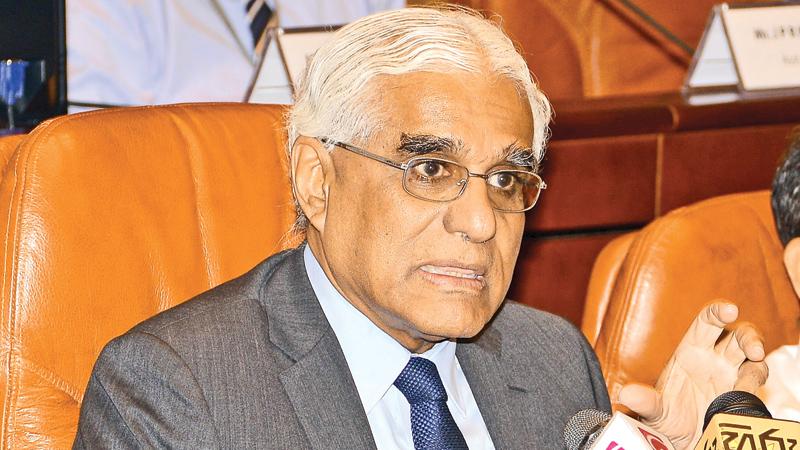
* ‘Will ensure stability and transparency’ * ‘No issues with banking sector’
The regulatory mechanism for financial institutions will be further strengthened to ensure stability and transparency in non-banking financial institutions (NBFIs), Central Bank Governor Dr. Indrajit Coomaraswamy told journalists at the Monetary Policy Review media briefing last week.
The governor acknowledged that there has to be a more robust and vibrant regulatory system for NBFIs which currently comprises around 50 players. “We have no issues with the banking sector. It is the NBFIs that need thorough supervision and monitoring.”
The Central Bank has outlined a series of measures to strengthen the financial sector such as having risk based examinations, a traffic light and early warning system and increasing the capital adequacy ratio.
“There needs to be a consolidation process in the medium and the long term to face shocks in the market,” a Deputy Governor of the Central Bank said.
NBFIs will need to have a capital requirement of Rs. 1 billion from 2018.
“More stability measures for financial institutions will be introduced through the Central Bank’s Road Map to be launched next week,” the Central Bank official said.
The plight of depositors of Central Investment and Finance Co Ltd. (CIFL) surfaced at the media briefing. Responding to allegations that nothing has been done to relieve depositors from their predicament, the governor said that around 75 percent of the deposits are below Rs. 1 million and that a major proportion of this segment has been paid back.
Getting back to current status of the economy, the Governor said he was not pleased with the economic growth rate recorded in the third quarter which was 3.3 percent compared to 4.0 percent recorded in the previous quarter.
“A 3.3 percent growth rate is very discouraging. We might end the year at best at 4 percent,” the governor said.
However, on a positive note, the governor said that the economy is continuing to stabilise and that it has been endorsed by the IMF executive board.
Economic growth in the third quarter was mainly driven by the moderate expansion in the Industry and Services sectors, while the Agriculture sector continued to record a negative growth on account of weather related disruptions.
A journalist also queried the decline in the contribution of the agriculture sector which accounts for around 20 percent of the share of the overall growth.
The adverse weather becomes the scapegoat for the unsatisfactory growth in the agriculture sector and this is now the usual explanation of the Central Bank, he said.
Failing to provide a plausible reason for the low performance of the sector, the Central Bank officials continued to pin the blame on the weather and he went on to state that climate proof is a long term exercise.
